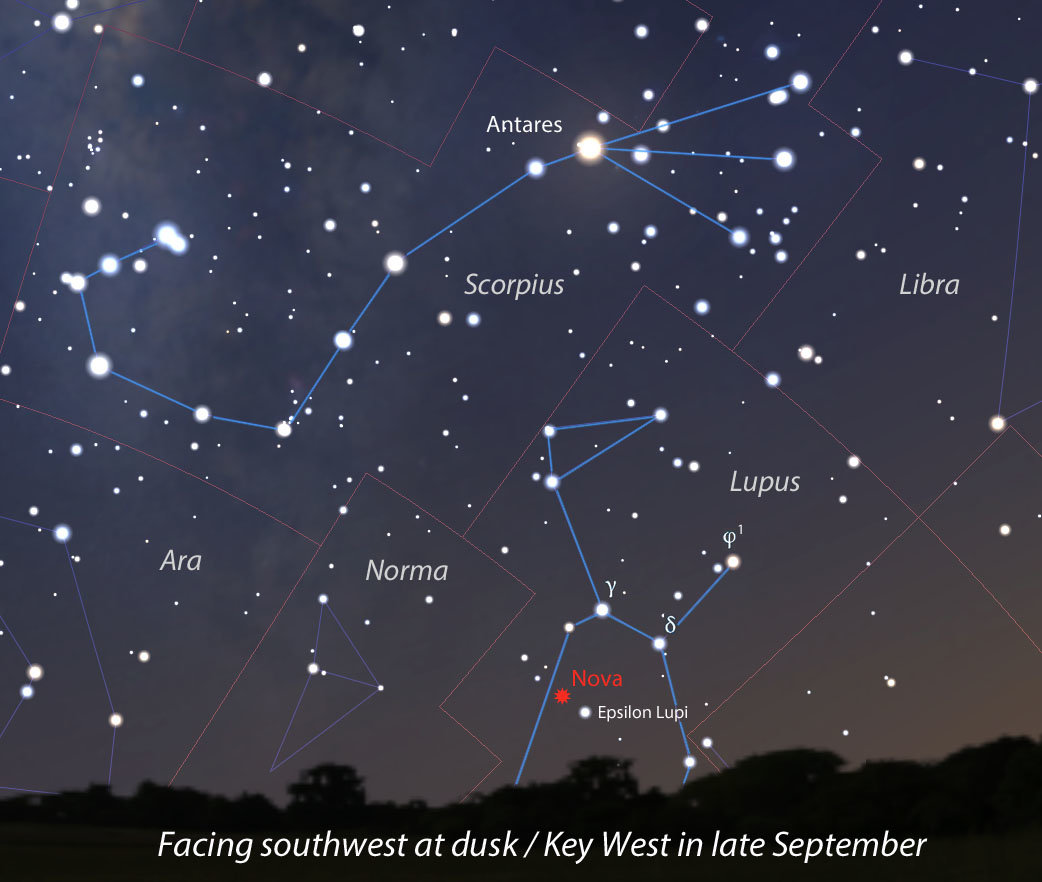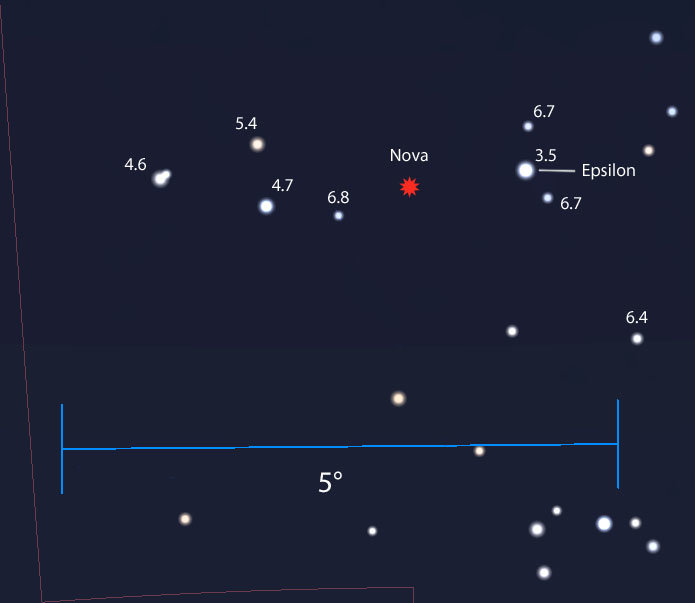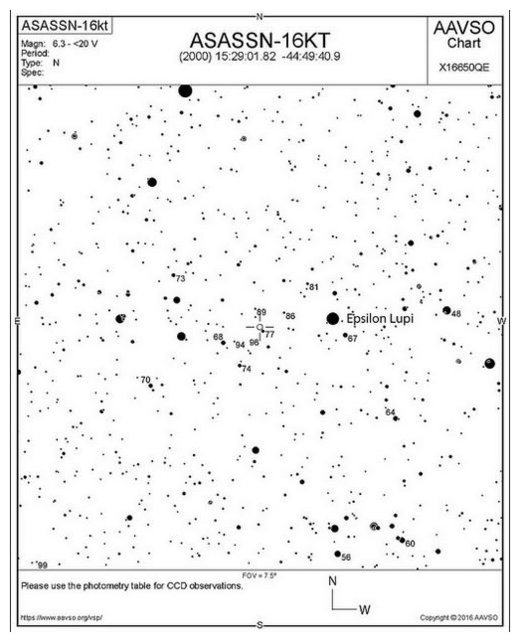
The nova, dubbed ASASSN-16kt for now, was discovered during the ongoing All Sky Automated Survey for SuperNovae (ASAS-SN or "Assassin"), using data from the quadruple 14-cm "Cassius" telescope in CTIO, Chile. Krzysztof Stanek and team reported the new star in Astronomical Telegram #9538. By the evening of September 23 local time, the object had risen to magnitude +9.1, and it's currently +6.8. So let's see — that's about an 11-magnitude jump or a 24,000-fold increase in brightness! And it's still on the rise.
The star is located at R.A. 15h 29?, - 44° 49.7? in the southern constellation Lupus the Wolf. Even at this low declination, the star would clear the southern horizon from places like Chicago and further south, but in late September Lupus is low in the southwestern sky. To see the nova you'll need a clear horizon in that direction and observe from the far southern U.S. and points south. If you've planned a trip to the Caribbean or Hawaii in the coming weeks, your timing couldn't have been better!


A nova occurs in a close binary star system, where a small but extremely dense and massive (for its size) white dwarf siphons hydrogen gas from its closely-orbiting companion.
After whirling around in a flattened accretion disk around the dwarf, the material gets funneled down to the star's 150,000 F° surface where gravity compacts and heats the gas until it detonates in a titanic thermonuclear explosion.
Suddenly, a faint star that wasn't on anyone's radar vaults a dozen magnitudes to become a standout "new star".
Novae are relatively rare and almost always found in the plane of the Milky Way, where the stars are most concentrated.
The more stars, the greater the chances of finding one in a nova outburst. Roughly a handful a year are discovered, many of those in Scorpius and Sagittarius, in the direction of the galactic bulge.
We'll keep tabs on this new object and report back with more information and photos as they become available.
You can follow the new celebrity as well as print out finder charts on the American Association of Variable Star Observers (AAVSO) website by typing ASASSN-16kt in the info boxes.
I sure wish I wasn't stuck in Minnesota right now or I'd be staring down the wolf's new star!



Reader Comments
to our Newsletter